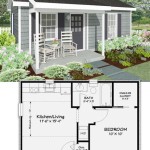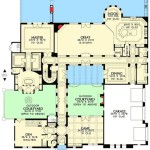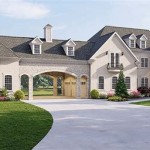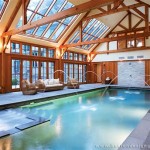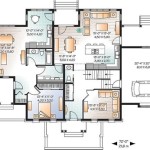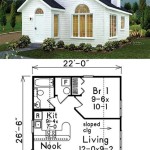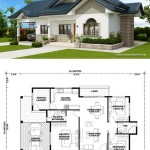Understanding Home Floor Plans and Their Visual Representation
Home floor plans serve as foundational documents in the construction, renovation, and real estate industries. They are scaled diagrams that depict the arrangement of rooms within a building, offering a bird's-eye view of the property. These plans detail the dimensions of rooms, the placement of walls, doors, windows, and built-in features like cabinets and appliances. The information conveyed by a floor plan is crucial for a wide range of stakeholders, including architects, builders, contractors, interior designers, and prospective homeowners.
Floor plans transcend mere blueprints. They represent a comprehensive spatial understanding of a dwelling. They allow individuals to visualize the flow of movement through a home, assess the usability of each space, and plan for furniture placement. Photographs, on the other hand, provide a realistic portrayal of the finished spaces. When these photographs are used in conjunction with a floor plan, they offer a complete picture of a property's layout and aesthetic.
The integration of floor plans and photographs is instrumental in making informed decisions regarding property selection, design modifications, and interior decoration. Potential buyers can use the floor plan to understand the architectural structure and then use the photographs to imagine how their lives might unfold within that space. Architects and designers rely on both to effectively communicate their vision and ensure that construction aligns with the homeowner’s desires.
Key Point 1: Elements of a Comprehensive Floor Plan
A comprehensive floor plan contains a wealth of detailed information. These are fundamental elements that enable accurate interpretation and application of the design.
Walls: Walls are represented as solid lines that delineate the boundaries of rooms and the external envelope of the building. The thickness of these lines may indicate whether a wall is load-bearing or non-load-bearing. Dimensions are typically provided to show the precise length of each wall section.
Doors and Windows: Doors are depicted as arcs showing the direction of swing, alongside their width measurements. Windows are typically represented as three parallel lines set within the wall, also with width measurements. The placement and size of doors and windows impact natural light, ventilation, and access points within the home.
Fixtures and Appliances: Standard fixtures such as toilets, sinks, bathtubs, showers, and kitchen appliances are depicted using standard symbols. These symbols are scaled to represent the approximate size of the actual item. Placement of these fixtures is critical for efficient use of space and adherence to plumbing codes.
Staircases: Staircases are shown with arrows indicating the direction of ascent or descent. The number of steps, the riser height, and the tread depth are usually specified. The placement and design of staircases significantly affect the flow of movement between different levels of a home.
Dimensions and Measurements: Dimensions are the numerical values indicating the length, width, and height of various elements within the floor plan. These measurements are essential for accurate construction and space planning. They are usually given in feet and inches, or meters, depending on regional conventions.
Scale: Every floor plan should indicate its scale, which is the ratio between the drawing and the actual size of the building. Common scales include 1/4 inch = 1 foot or 1/8 inch = 1 foot. The scale allows users to accurately calculate real-world dimensions from the plan.
Key Point 2: The Role of Photography in Complementing Floor Plans
While floor plans provide a technical overview, photographs offer a visual and emotional connection to a property. They bring the abstract representation of the plan to life, showcasing the aesthetic qualities and spatial characteristics of the interior and exterior.
Visualizing Space and Light: Photographs reveal the interplay of natural and artificial light within a home. They illustrate how light filters through windows, illuminating rooms and creating ambiance. This is crucial for understanding the feel of the space, something that a floor plan cannot fully convey.
Showcasing Finishes and Materials: Photographs capture the details of interior finishes, such as flooring materials, wall textures, cabinet styles, and countertop surfaces. These visual elements are essential for assessing the overall aesthetic and quality of the home. They also provide inspiration for design choices and renovation projects.
Illustrating Spatial Relationships: While a floor plan maps out the arrangement of rooms, photographs show how these rooms connect and interact visually. They highlight the flow of space between different areas, giving a better sense of the home's overall layout and functionality. For example, a photograph can demonstrate how a kitchen opens up to a living room, creating an open-concept living area.
Providing Context and Perspective: Photographs offer a human perspective within the architectural framework. They allow viewers to imagine themselves living in the space, visualizing furniture placement, and considering how they might use each room. This is particularly important for prospective homebuyers who are trying to envision their future in a new home.
Exterior Views and Landscaping: Photographs of the exterior of the house, including the landscaping, are as important as the interior. They provide a sense of the property’s curb appeal, its relationship to the surrounding environment, and the overall architectural style.
Key Point 3: Applications Across Industries
The combined use of floor plans and photographs has broad applications across various industries and professions. From real estate to interior design, these visual tools are fundamental for communication, planning, and decision-making.
Real Estate: In the real estate industry, floor plans and photographs are essential marketing tools. They allow potential buyers to virtually tour a property, assess its layout, and envision themselves living there. Online listings that include both floor plans and high-quality photographs tend to attract more attention and generate more leads.
Architecture and Design: Architects and interior designers rely on floor plans and photographs to communicate their design concepts to clients. Floor plans serve as the technical foundation for the design, while photographs show how the finished product will look and feel. This combination ensures that the design meets the client's needs and expectations.
Construction and Renovation: During construction and renovation projects, floor plans are used to guide the building process and ensure that the structure is built according to the design specifications. Photographs, both before and after the project, document the progress and showcase the transformation.
Insurance and Appraisal: Insurance companies and appraisers use floor plans and photographs to assess the value of a property and determine insurance premiums. They can assess the size, layout, and condition of the property, allowing them to develop accurate valuations and coverage plans.
Home Organization and Decorating: Homeowners can utilize floor plans and photographs to plan and execute home organization and decorating projects. By creating a floor plan, they can optimize the use of space and plan furniture arrangements. Photographs of interior spaces can provide inspiration for color schemes, décor styles, and furniture choices.
Floor plans, particularly when integrated with photographic representation, provide a powerful tool for understanding and interacting with physical spaces. From facilitating real estate transactions to guiding architectural design and construction, these visual aids are instrumental for informed decision-making across diverse fields. They bridge the gap between abstract representation and tangible experience, enabling individuals to perceive and navigate the built environment with greater clarity.

Design Your Own House Floor Plans Roomsketcher

Small House Designs Shd 2024001 Pinoy Eplans

Where You Can Buy House Plans Live Home 3d

Can I Add More Square Feet To A Custom Home Plan

House Plans Home Floor Architecturalhouseplans Com

Use Your Own Floor Plan Diyanni Homes

Floor Plans How To Design The Perfect Layout Cherished Bliss

Small House Design Shd 2024007 Pinoy Eplans

Small House Plans Simple Tiny Floor Monster

Choosing The Best Floor Plan For Your Modular Home Next

